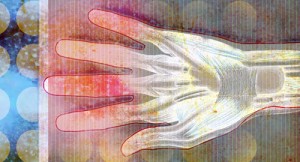 Carpal tunnel syndrome release surgery is generally effective in reducing symptoms. However, questions remain about the effectiveness and safety of rehabilitation services recommended after surgery. A recent Cochrane Review has found only limited and low-quality evidence for the benefit of interventions for rehabilitation following carpal tunnel syndrome surgery.1 The authors, thus, concluded patients should be informed that these postoperative rehabilitation interventions might not be effective. Moreover, absent solid data, the decision to provide rehabilitation after surgery cannot be evidence based and must, instead, be made in the context of the rehabilitation environment and based on clinician experience and patient preference.
Carpal tunnel syndrome release surgery is generally effective in reducing symptoms. However, questions remain about the effectiveness and safety of rehabilitation services recommended after surgery. A recent Cochrane Review has found only limited and low-quality evidence for the benefit of interventions for rehabilitation following carpal tunnel syndrome surgery.1 The authors, thus, concluded patients should be informed that these postoperative rehabilitation interventions might not be effective. Moreover, absent solid data, the decision to provide rehabilitation after surgery cannot be evidence based and must, instead, be made in the context of the rehabilitation environment and based on clinician experience and patient preference.
The review called for research that focuses on identifying which patients are likely to respond to a particular treatment and which are likely not to respond. Additionally, the authors suggested that future controlled studies evaluate the severity of iatrogenic symptoms from surgery and measure such outcomes as function and return-to-work rates.
The Cochrane Review was authored by Susan Peters, PhD, senior research coordinator at the University of Queensland in Australia, and colleagues. The team reviewed the effectiveness of immobilization with a wrist orthosis (i.e., splint), use of dressings post-surgery, exercise, cold and ice therapy, laser therapy, electrical treatments, scar desensitization and arnica, as well as different types of hand rehabilitation provided in combination. They identified studies that compared the effectiveness and safety of these various rehabilitation treatments relative to no treatment, placebo or another non-surgical intervention.
“We identified one randomized trial that compared effects of controlled cold therapy vs. ice therapy commenced immediately post-surgery and continued for three days. Results from this trial support the use of controlled cold therapy over ice therapy for both pain and swelling reduction in the short term. However, participants and outcome assessors in this study were not blinded, and this may have influenced their expectations of the effects of interventions,” write the authors in their discussion.
Unfortunately, the limitations in the cold therapy study were reflective of the limitations found in most of the studies identified for the Cochrane Review. The authors noted that many of the studies had unit of analysis errors that made it difficult to interpret the data. Moreover, of the 22 studies reviewed, only four studies reported the primary outcome of interest: long-term, self-reported functional ability at three or more months. Additionally, only three studies reported outcome data that could reasonably be included in the review.
In their review, the authors described four trials that examined early immobilization of the wrist using orthosis. Two of these provided incomplete data, and two found no significant benefit from the intervention. Similarly, of the two trials comparing multi-modal hand therapy with a non-graduated home exercise program or a progressive patient-directed exercise program, one did not report interpretable outcome data and the other found no significant difference between the treatment groups.


